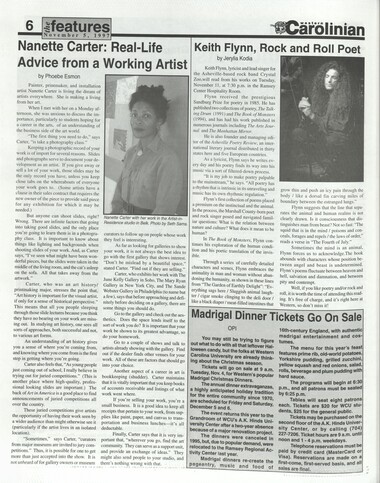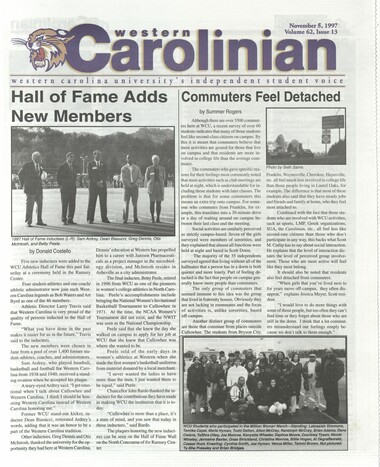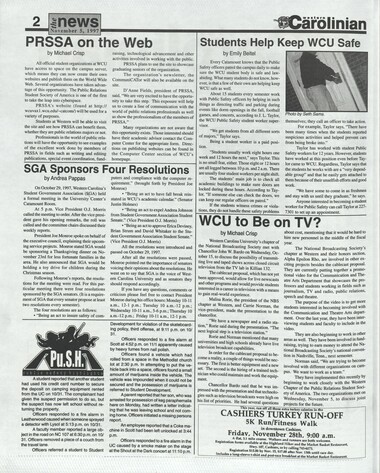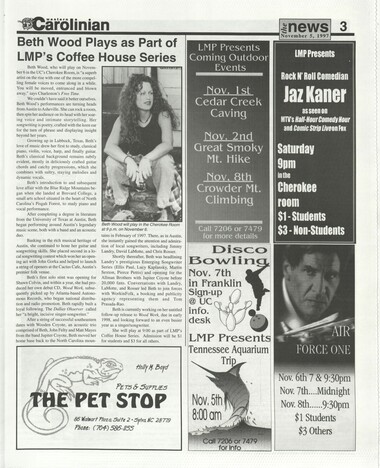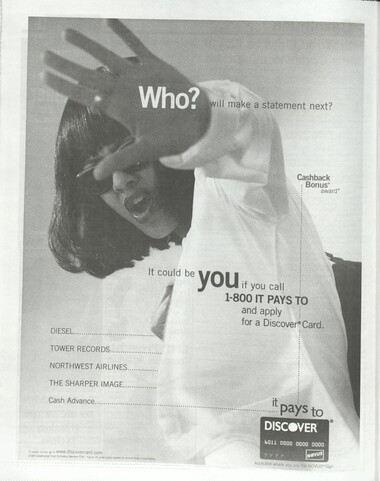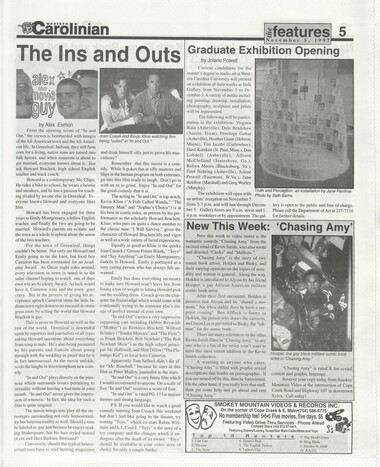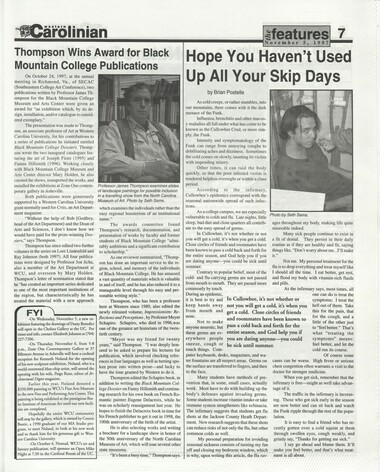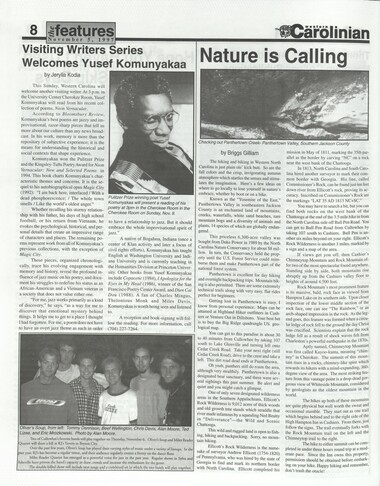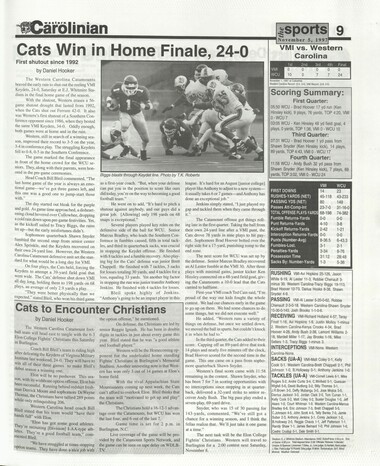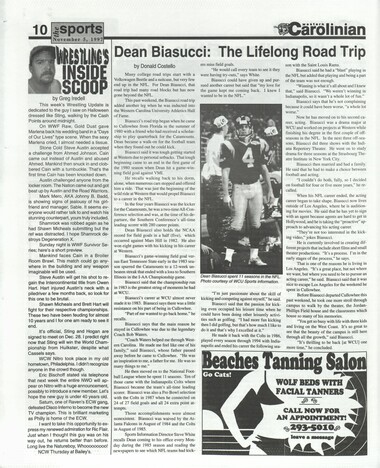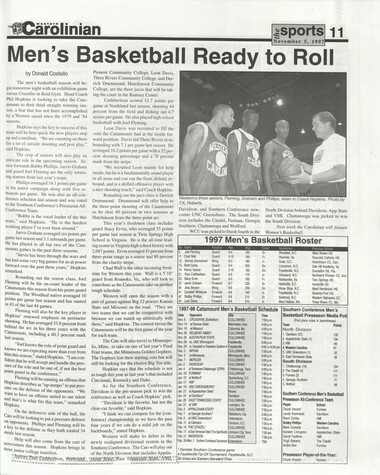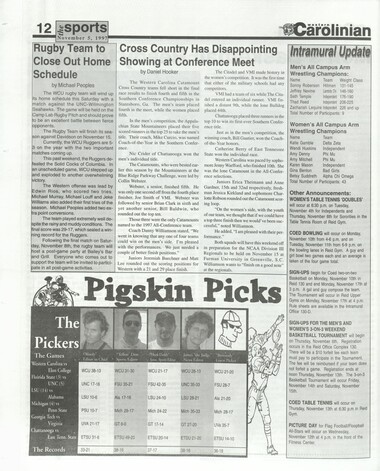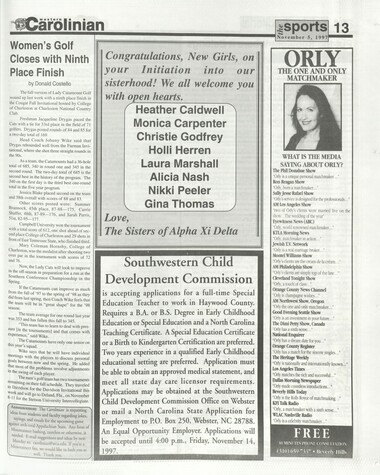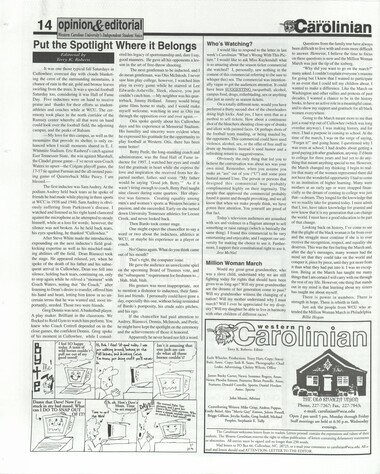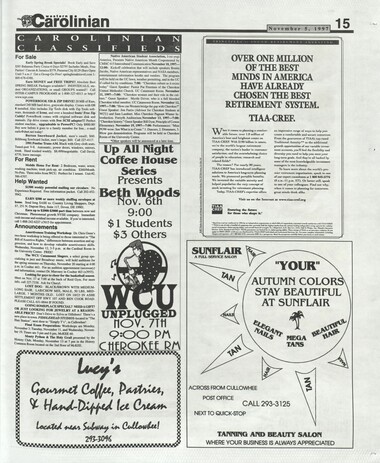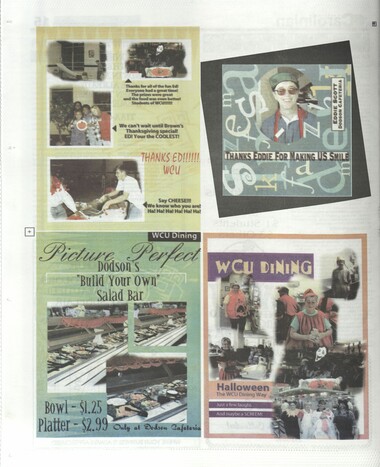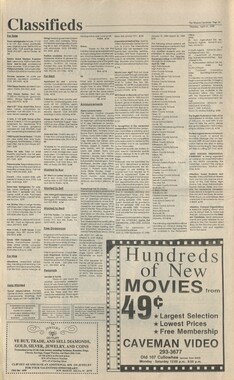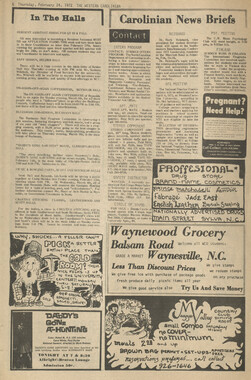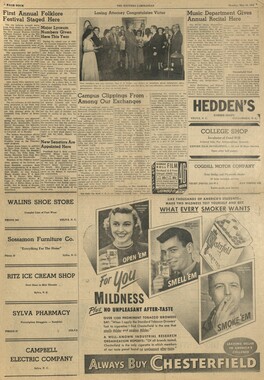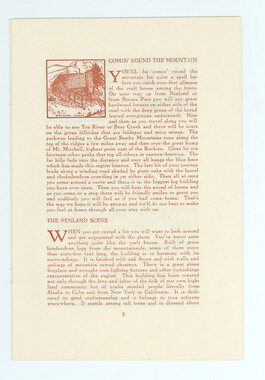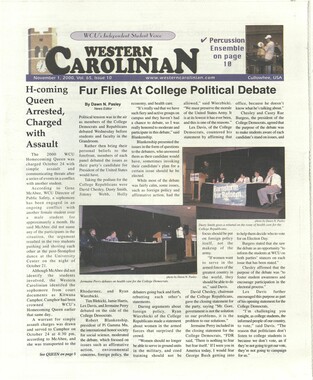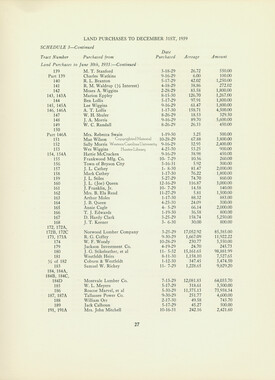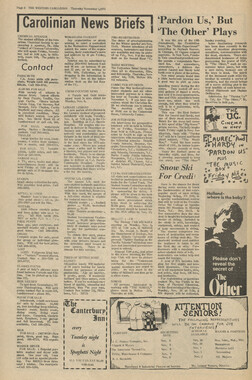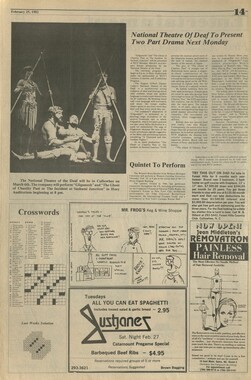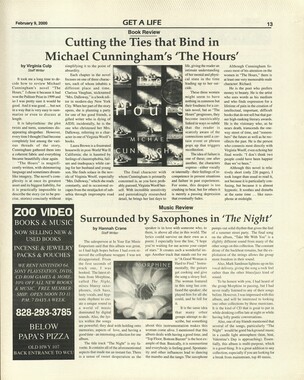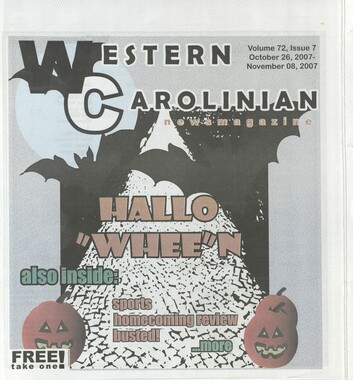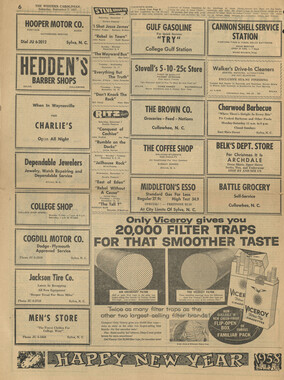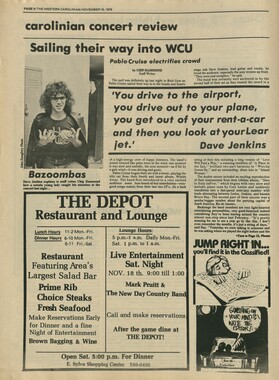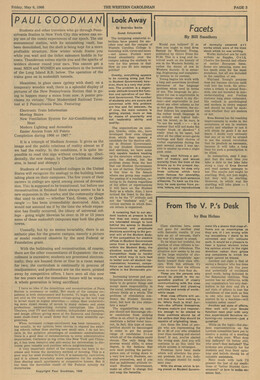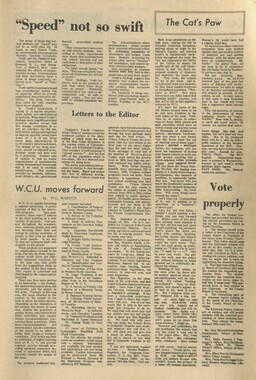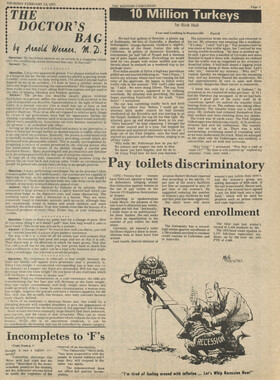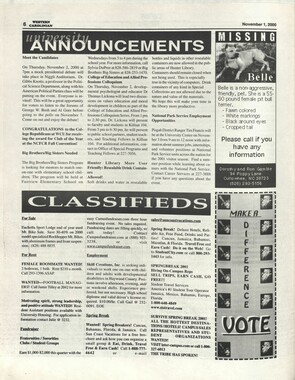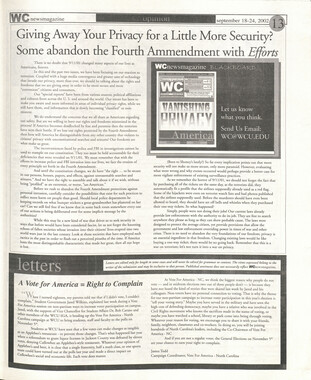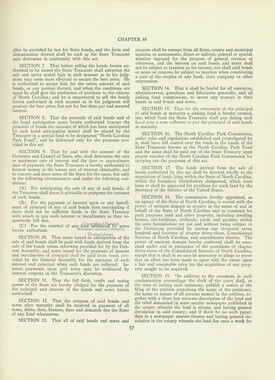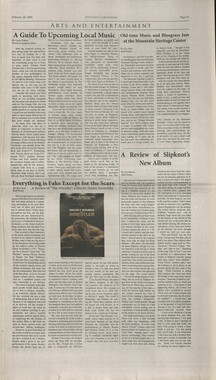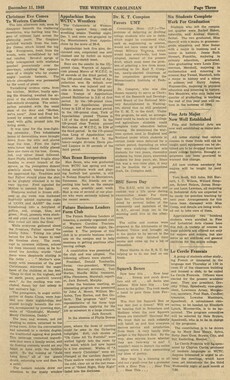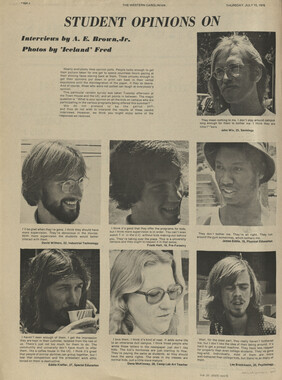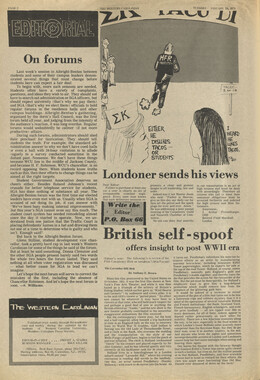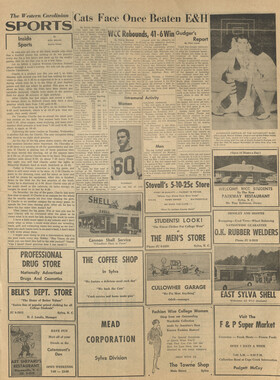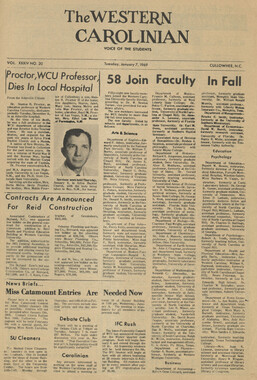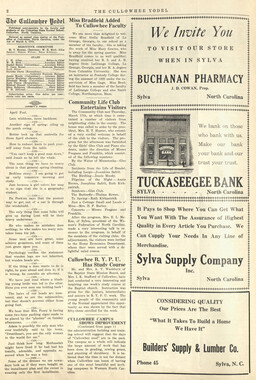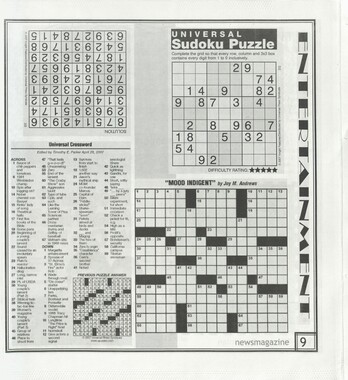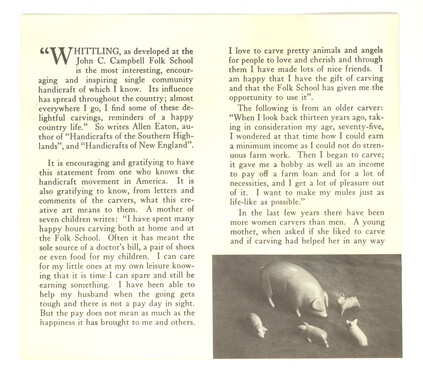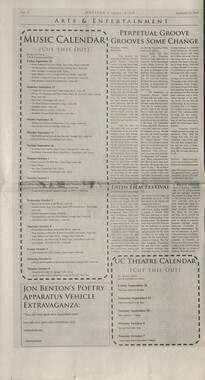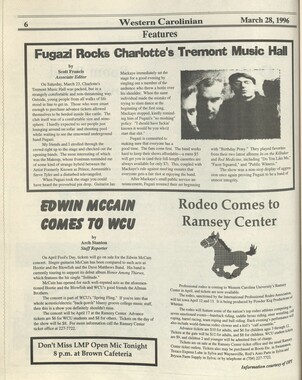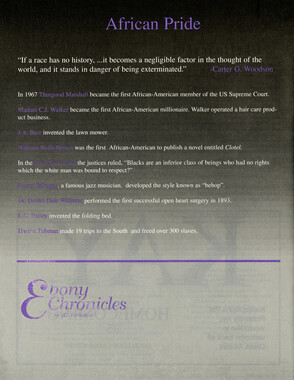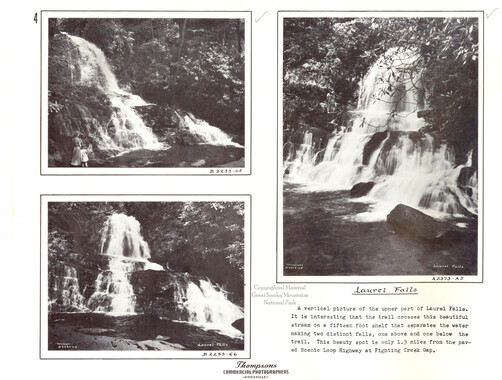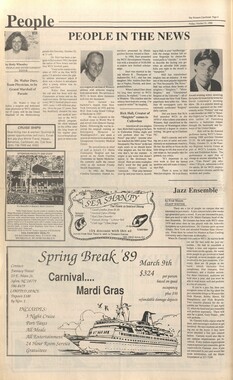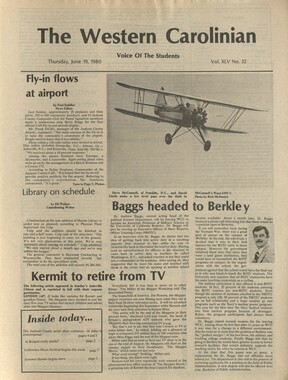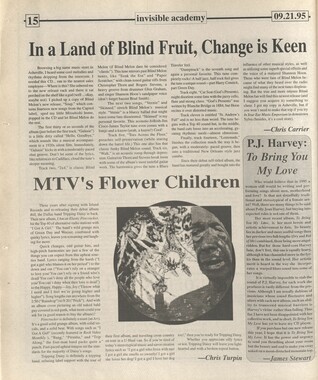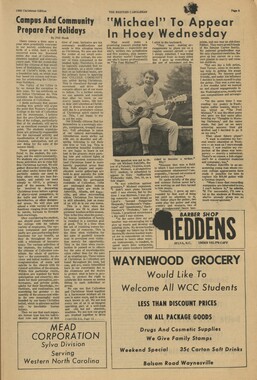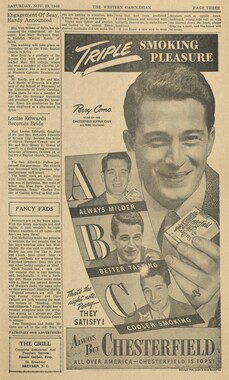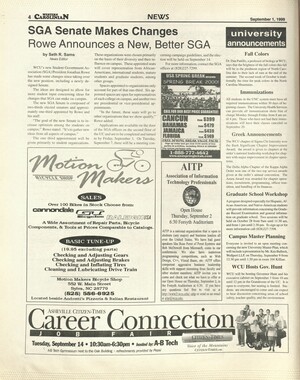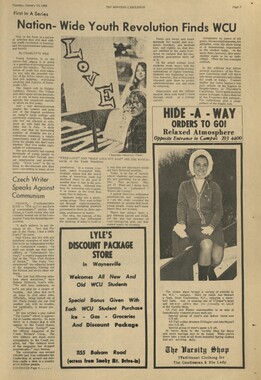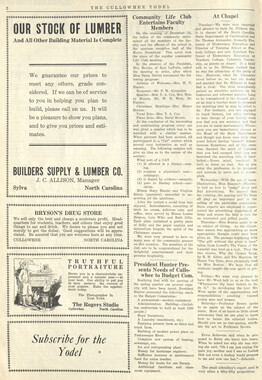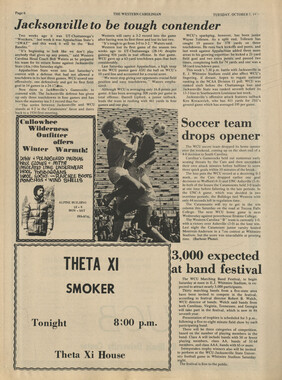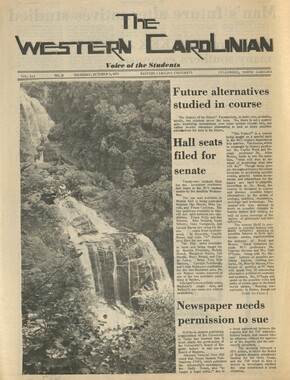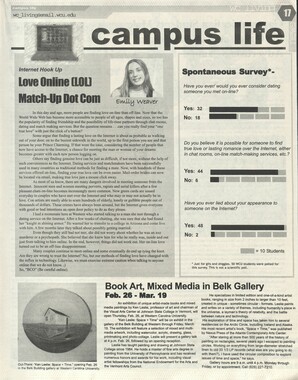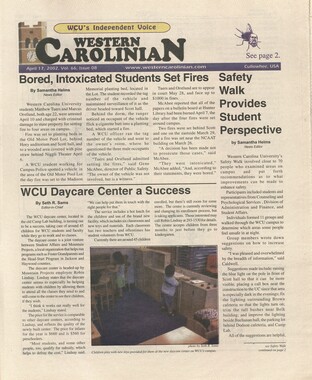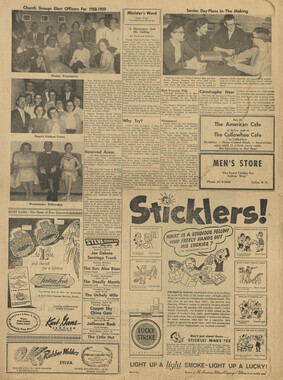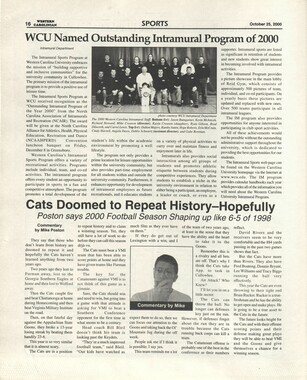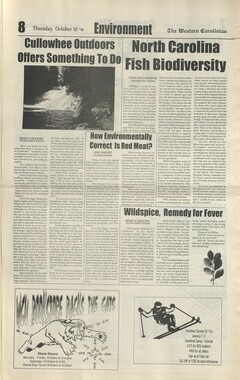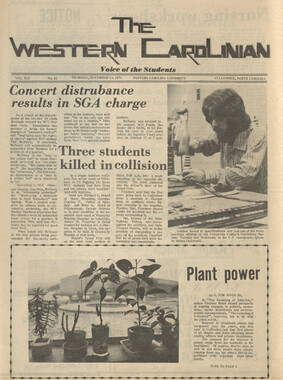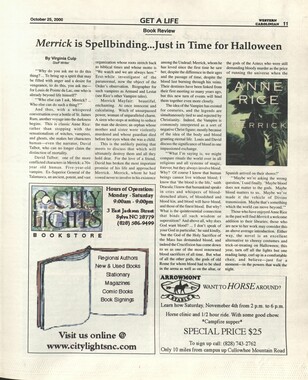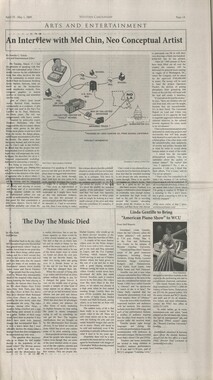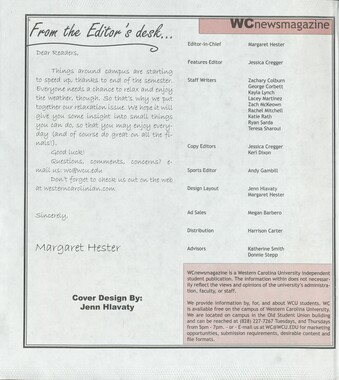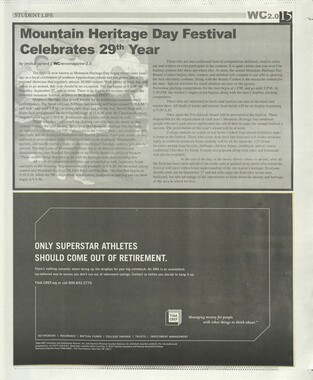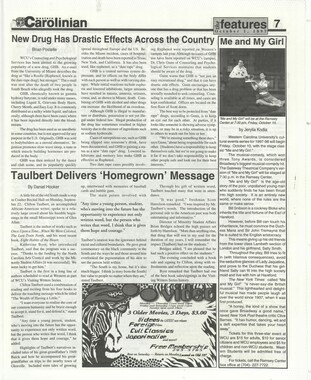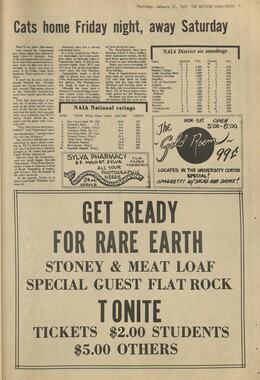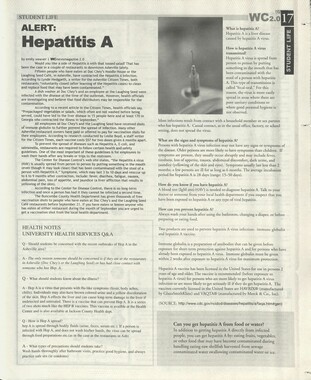Western Carolina University (21)
View all
- Canton Champion Fibre Company (2308)
- Cherokee Traditions (291)
- Civil War in Southern Appalachia (165)
- Craft Revival (1942)
- George Masa Collection (137)
- Great Smoky Mountains - A Park for America (3080)
- Highlights from Western Carolina University (422)
- Horace Kephart (973)
- Journeys Through Jackson (159)
- LGBTQIA+ Archive of Jackson County (89)
- Oral Histories of Western North Carolina (318)
- Picturing Appalachia (6617)
- Stories of Mountain Folk (413)
- Travel Western North Carolina (153)
- Western Carolina University Fine Art Museum Vitreograph Collection (129)
- Western Carolina University Herbarium (92)
- Western Carolina University: Making Memories (738)
- Western Carolina University Publications (2491)
- Western Carolina University Restricted Electronic Theses and Dissertations (146)
- Western North Carolina Regional Maps (71)
- World War II in Southern Appalachia (131)
University of North Carolina Asheville (6)
View all
- Allanstand Cottage Industries (62)
- Appalachian National Park Association (53)
- Bennett, Kelly, 1890-1974 (1463)
- Berry, Walter (76)
- Brasstown Carvers (40)
- Carver, George Washington, 1864?-1943 (26)
- Cathey, Joseph, 1803-1874 (1)
- Champion Fibre Company (233)
- Champion Paper and Fibre Company (297)
- Cherokee Indian Fair Association (16)
- Cherokee Language Program (22)
- Crowe, Amanda (40)
- Edmonston, Thomas Benton, 1842-1907 (7)
- Ensley, A. L. (Abraham Lincoln), 1865-1948 (275)
- Fromer, Irving Rhodes, 1913-1994 (70)
- George Butz (BFS 1907) (46)
- Goodrich, Frances Louisa (120)
- Grant, George Alexander, 1891-1964 (96)
- Heard, Marian Gladys (60)
- Kephart, Calvin, 1883-1969 (15)
- Kephart, Horace, 1862-1931 (313)
- Kephart, Laura, 1862-1954 (67)
- Laney, Gideon Thomas, 1889-1976 (439)
- Masa, George, 1881-1933 (61)
- McElhinney, William Julian, 1896-1953 (44)
- Niggli, Josephina, 1910-1983 (10)
- North Carolina Park Commission (105)
- Osborne, Kezia Stradley (9)
- Owens, Samuel Robert, 1918-1995 (11)
- Penland Weavers and Potters (36)
- Roberts, Vivienne (15)
- Roth, Albert, 1890-1974 (142)
- Schenck, Carl Alwin, 1868-1955 (1)
- Sherrill's Photography Studio (2565)
- Southern Highland Handicraft Guild (127)
- Southern Highlanders, Inc. (71)
- Stalcup, Jesse Bryson (46)
- Stearns, I. K. (213)
- Thompson, James Edward, 1880-1976 (226)
- United States. Indian Arts and Crafts Board (130)
- USFS (683)
- Vance, Zebulon Baird, 1830-1894 (1)
- Weaver, Zebulon, 1872-1948 (58)
- Western Carolina College (230)
- Western Carolina Teachers College (282)
- Western Carolina University (2008)
- Western Carolina University. Mountain Heritage Center (18)
- Whitman, Walt, 1819-1892 (10)
- Wilburn, Hiram Coleman, 1880-1967 (73)
- Williams, Isadora (3)
- Cain, Doreyl Ammons (0)
- Crittenden, Lorraine (0)
- Rhodes, Judy (0)
- Smith, Edward Clark (0)
- Appalachian Region, Southern (3032)
- Asheville (N.C.) (1945)
- Avery County (N.C.) (26)
- Blount County (Tenn.) (195)
- Buncombe County (N.C.) (1680)
- Cherokee County (N.C.) (283)
- Clay County (N.C.) (556)
- Graham County (N.C.) (238)
- Great Smoky Mountains National Park (N.C. and Tenn.) (525)
- Haywood County (N.C.) (3573)
- Henderson County (N.C.) (70)
- Jackson County (N.C.) (4925)
- Knox County (Tenn.) (35)
- Knoxville (Tenn.) (13)
- Lake Santeetlah (N.C.) (10)
- Macon County (N.C.) (421)
- Madison County (N.C.) (216)
- McDowell County (N.C.) (39)
- Mitchell County (N.C.) (135)
- Polk County (N.C.) (35)
- Qualla Boundary (982)
- Rutherford County (N.C.) (78)
- Swain County (N.C.) (2185)
- Transylvania County (N.C.) (270)
- Watauga County (N.C.) (12)
- Waynesville (N.C.) (86)
- Yancey County (N.C.) (72)
- Aerial Photographs (3)
- Aerial Views (60)
- Albums (books) (4)
- Articles (1)
- Artifacts (object Genre) (228)
- Bibliographies (1)
- Biography (general Genre) (2)
- Cards (information Artifacts) (38)
- Clippings (information Artifacts) (192)
- Copybooks (instructional Materials) (3)
- Crafts (art Genres) (622)
- Depictions (visual Works) (21)
- Design Drawings (1)
- Digital Moving Image Formats (2)
- Drawings (visual Works) (185)
- Envelopes (101)
- Exhibitions (events) (1)
- Facsimiles (reproductions) (1)
- Fiction (general Genre) (4)
- Financial Records (12)
- Fliers (printed Matter) (67)
- Glass Plate Negatives (381)
- Guidebooks (2)
- Internegatives (10)
- Interviews (823)
- Land Surveys (102)
- Letters (correspondence) (1045)
- Manuscripts (documents) (618)
- Maps (documents) (177)
- Memorandums (25)
- Minutes (administrative Records) (59)
- Negatives (photographs) (6090)
- Newsletters (1290)
- Newspapers (2)
- Notebooks (8)
- Occupation Currency (1)
- Paintings (visual Works) (1)
- Pen And Ink Drawings (1)
- Periodicals (194)
- Personal Narratives (10)
- Photographs (12977)
- Plans (maps) (1)
- Poetry (6)
- Portraits (4568)
- Postcards (329)
- Programs (documents) (181)
- Publications (documents) (2444)
- Questionnaires (65)
- Relief Prints (26)
- Sayings (literary Genre) (1)
- Scrapbooks (282)
- Sheet Music (2)
- Slides (photographs) (402)
- Songs (musical Compositions) (2)
- Sound Recordings (802)
- Specimens (92)
- Speeches (documents) (18)
- Tintypes (photographs) (8)
- Transcripts (329)
- Text Messages (0)
- A.L. Ensley Collection (275)
- Appalachian Industrial School Records (7)
- Appalachian National Park Association Records (336)
- Axley-Meroney Collection (2)
- Bayard Wootten Photograph Collection (20)
- Bethel Rural Community Organization Collection (7)
- Blumer Collection (5)
- C.W. Slagle Collection (20)
- Canton Area Historical Museum (2110)
- Carlos C. Campbell Collection (462)
- Cataloochee History Project (64)
- Cherokee Studies Collection (4)
- Daisy Dame Photograph Album (5)
- Daniel Boone VI Collection (1)
- Doris Ulmann Photograph Collection (112)
- Elizabeth H. Lasley Collection (1)
- Elizabeth Woolworth Szold Fleharty Collection (4)
- Frank Fry Collection (95)
- George Masa Collection (173)
- Gideon Laney Collection (452)
- Hazel Scarborough Collection (2)
- Hiram C. Wilburn Papers (28)
- Historic Photographs Collection (236)
- Horace Kephart Collection (861)
- Humbard Collection (33)
- Hunter and Weaver Families Collection (1)
- I. D. Blumenthal Collection (4)
- Isadora Williams Collection (4)
- Jesse Bryson Stalcup Collection (47)
- Jim Thompson Collection (224)
- John B. Battle Collection (7)
- John C. Campbell Folk School Records (80)
- John Parris Collection (6)
- Judaculla Rock project (2)
- Kelly Bennett Collection (1482)
- Love Family Papers (11)
- Major Wiley Parris Civil War Letters (3)
- Map Collection (12)
- McFee-Misemer Civil War Letters (34)
- Mountain Heritage Center Collection (4)
- Norburn - Robertson - Thomson Families Collection (44)
- Pauline Hood Collection (7)
- Pre-Guild Collection (2)
- Qualla Arts and Crafts Mutual Collection (12)
- R.A. Romanes Collection (681)
- Rosser H. Taylor Collection (1)
- Samuel Robert Owens Collection (94)
- Sara Madison Collection (144)
- Sherrill Studio Photo Collection (2558)
- Smoky Mountains Hiking Club Collection (616)
- Stories of Mountain Folk - Radio Programs (374)
- The Reporter, Western Carolina University (510)
- Venoy and Elizabeth Reed Collection (16)
- WCU Gender and Sexuality Oral History Project (36)
- WCU Mountain Heritage Center Oral Histories (25)
- WCU Oral History Collection - Mountain People, Mountain Lives (71)
- WCU Students Newspapers Collection (1923)
- Western North Carolina Tomorrow Black Oral History Project (69)
- William Williams Stringfield Collection (2)
- Zebulon Weaver Collection (109)
- African Americans (390)
- Appalachian Trail (35)
- Artisans (521)
- Cherokee art (84)
- Cherokee artists -- North Carolina (10)
- Cherokee language (21)
- Cherokee pottery (101)
- Cherokee women (208)
- Church buildings (190)
- Civilian Conservation Corps (U.S.) (111)
- College student newspapers and periodicals (2012)
- Dams (108)
- Dance (1023)
- Education (222)
- Floods (63)
- Folk music (1015)
- Forced removal, 1813-1903 (2)
- Forest conservation (220)
- Forests and forestry (1198)
- Gender nonconformity (4)
- Great Smoky Mountains National Park (N.C. and Tenn.) (181)
- Hunting (47)
- Landscape photography (25)
- Logging (122)
- Maps (83)
- Mines and mineral resources (9)
- North Carolina -- Maps (18)
- Paper industry (38)
- Postcards (255)
- Pottery (135)
- Railroad trains (72)
- Rural electrification -- North Carolina, Western (3)
- School integration -- Southern States (2)
- Segregation -- North Carolina, Western (5)
- Slavery (5)
- Sports (452)
- Storytelling (243)
- Waterfalls -- Great Smoky Mountains (N.C. and Tenn.) (66)
- Weaving -- Appalachian Region, Southern (280)
- Wood-carving -- Appalachian Region, Southern (328)
- World War, 1939-1945 (173)
Western Carolinian Volume 62 (63) Number 13
Item
Item’s are ‘child’ level descriptions to ‘parent’ objects, (e.g. one page of a whole book).
-
-
features November 5, 1997 * Nanette Carter: Real-Life Advice from a Working Artist by Phoebe Esmon Painter, printmaker, and installation artist Nanette Carter is living the dream of artists everywhere. She is making a living from her art. When I met with her on a Monday afternoon, she was anxious to discuss the importance, particularly to students hoping for a career in the arts, of an understanding of the business side of the art world. "The first thing you need to do," says Carter, "is take a photography class." Keeping a photographic record of your work is of import for several reasons. Slides and photographs serve to document your development as an artist. If you give away or sell a lot of your work, those slides may be the only record you have, unless you keep close tabs on the whereabouts of everyone your work goes to. (Some artists have a clause in their sales contract that requires the new owner ofthe piece to provide said piece for any exhibition for which it may be needed.) But anyone can shoot slides, right? Wrong. There are infinite factors that going into taking good slides, and the only place you're going to learn them is in a photography class. It is important to know about things like lighting and backgrounds when shooting slides of your work. And, as Carter says, "I've seen what might have been wonderful pieces, but the slides were taken in the middle ofthe living room, and the cat's asleep on the sofa. All that takes away from the artwork." Carter, who was an art history/ printmaking major, stresses the point that, "Art history is important for the visual artist, if only for a sense of historical perspective." This means that all you people sleeping through those slide lectures because you think they have no bearing on your work are missing out. In studying art history, one sees all sorts of approaches, both successful and not, to various art forms. An understanding of art history gives you a sense of where you're coming from, and knowing where you come from is the first step in getting where you're going. Carter also feels that, "As young people just coming out of school, I really believe in trying out for juried competitions." (This is another place where high-quality, professional looking slides are important.) The back of Art in America is a good place to find announcements of juried competitions all over the country. These juried competitions give artists the opportunity of having their work seen by a wider audience than might otherwise see it (particularly if the artist lives in an isolated location). "Sometimes," says Carter, "curators from major museums are invited to jury competitions." Thus, it is possible for one to get more than just accepted into the show. It is not unheard of for gallery owners or museum Nanette Carter with her work in the Artist-in Residence studio in Belk. Photo by Seth Sams. curators to follow up on people whose work they feel is interesting. As far as looking for galleries to show your work, it is not always the best idea to go with the first gallery that shows interest. "Don't be mislead by a beautiful space," stated Carter. "Find out if they are selling." Carter, who exhibits her work with The June Kelly Gallery in Soho, The Mary Ryan Gallery in New York City, and The Sande Webster Gallery in Philadelphia (to name but a few), says that before approaching and definitely before deciding on a gallery, there are some things you should do. Go to the gallery and check out the aesthetics. Does the space lends itself to the sort of work you do? It is important that your work be shown to its greatest advantage, so do your homework. Go to a couple of shows and talk to artists already showing with the gallery. Find out if the dealer finds other venues for your work. All of these are factors that should go into your choice. Another aspect of a career in art is bookkeeping (shudder). Carter maintains that it is vitally important that you keep books of accounts receivable and listings of what work went where. If you're selling your work, you're a small business. It is a good idea to keep all receipts that pertain to your work, from supplies like paint, paper, and canvas to transportation and business lunches—it's all deductable. Finally, Carter says that it is very important that, "wherever you go, find the art community They can serve as a support unit, and provide an exchange of ideas." They might also send people to your studio, and there's nothing wrong with that. western ■• • arolmian Keith Flynn, Rock and Roll Poet by Jerylia Kodia Keith Flynn, lyricist and lead singer for the Asheville-based rock band Crystal Zoo,will read from his works on Tuesday, November 11, at 7:30 p.m. in the Ramsey Center Hospitality Room. Flynn received the prestigious Sandburg Prize for poetry in 1985. He has published two collections of poetry, The Talking Drum (1991) and The Book of Monsters (1994), and has had his work published in numerous journals including The Arts Journal and The Manhattan Mirror. He is also founder and managing editor of the Asheville Poetry Review, an international literary journal distributed in thirty states here and five European countries. As a lyricist, Flynn says he writes every day and his poetry finds its way into his music via a sort of filtered-down process. "It is my job to make poetry palpable to the mainstream," he says. "All poetry has a rhythm that is intrinsic in its unraveling and music has its own rhythmic regulation." Flynn's first collection of poems placed a premium on the instinctual and the animal. In the process, the Marshall County-born poet and rock singer posed and navigated familiar questions: What is the relation between nature and culture? What does it mean to be human? In The Book of Monsters, Flynn continues his exploration of the human condition and his poetic translation of the invisible. Through a series of carefully detailed characters and scenes, Flynn embraces the animality in man and woman without abandoning the humanity, as shown in these lines from "The Garden of Earthly Delight": "Everything sags here / Sluggish animal laughter / cigar smoke clinging to the deli door / like a black diaper / meat-filled intestines that grow thin and push an icy pain through the body / like a dorsal fin carving miles of boundary between the estranged lungs." Flynn suggests that the line that separates the animal and human realms is not clearly drawn. Is it consciousness that distinguishes man from beast? Not so fast: "The squid that is in the mind / poisons and conceals, forages and repels / the laws of order," reads a verse in "The Fourth of July." Sometimes the mind is an animal, Flynn forces us to acknowledge.The book abounds with characters whose position between angel and beast is undetermined. Flynn's poems fluctuate between heaven and hell, salvation and damnation, and between pity and contempt. Well, if you like poetry and/or rock and roll, it is worth the time of attending this reading. It's free of charge, and it's right here at Western, so don't miss it! Madrigal Dinner Tickets Go On Sale OPI You may still be trying to figure out what to do with all that leftover Halloween candy, but the folks at Western Carolina University are already thinking about the Christmas season. Tickets will go on sale at 9 a.m. Tuesday, Nov. 4, for Western's popular Madrigal Christmas Dinners. The annual dinner extravaganzas, a highly anticipated holiday tradition for the entire community since 1970, are scheduled for Friday and Saturday, December 5 and 6. The event returns this year to the Grandroom of WCU's A.K. Hinds University Center after a two-year absence because of a major renovation project. The dinners were canceled in 1995, but, due to popular demand, were relocated to the Ramsey Regional Activity Center last year. Madrigal dinners re-create the pageantry, music and food of ill i« HWiir -■- " 16th-century England, with authentic madrigal entertainment and cos tumes. The menu for this year's feast features prime rib, old-world potatoes, Yorkshire pudding, grilled zucchini, yellow squash and red onions, salad, rolls, beverage and plum pudding with hard sauce. The programs will begin at 6:30 p.m., and all patrons must be seated by 6:25 p.m. Tables will seat eight patrons each. Tickets are $20 for WCU students, $25 for the general public. Tickets may be purchased on the second floor of the A.K. Hinds University Center, or by calling (704) 227-7206. Ticket hours are 9 a.m. until noon and 1 - 4 p.m. weekdays. Telephone reservations must be paid by credit card (MasterCard or Visa). Reservations are made on a first-come, first-served basis, and all sales are final.
Object
Object’s are ‘parent’ level descriptions to ‘children’ items, (e.g. a book with pages).
-
The Western Carolinian is Western Carolina University's student-run newspaper. The paper was published as the Cullowhee Yodel from 1924 to 1931 before changing its name to The Western Carolinian in 1933.
-
